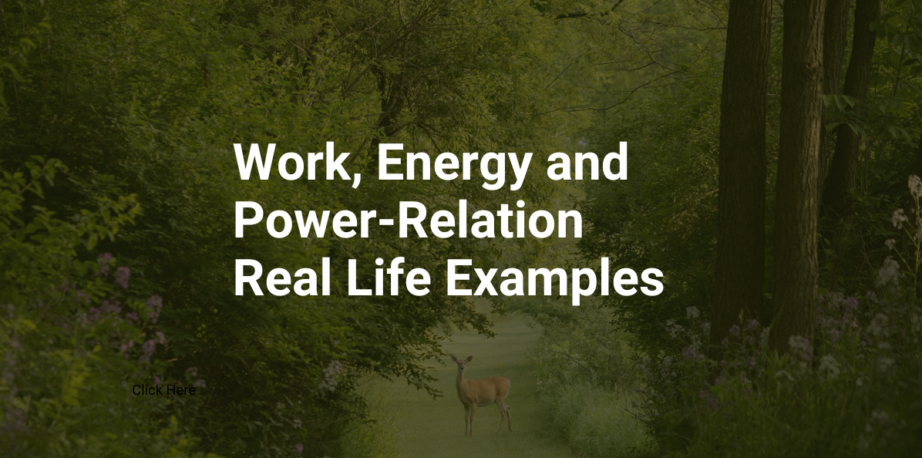Work is when you use a force to move something over a distance. Imagine pushing a heavy box across a room — that’s work! Energy is the ability to do work. When you eat food, your body converts it into energy that helps you run, jump, and play. Power, on the other hand, is how fast you can do the work or use energy. It’s like how quickly you can lift that box or how fast you can run.
Daily life example: When you pedal a bicycle, you’re doing work by moving the pedals and using energy from the food you’ve eaten. The power comes in when you pedal quickly, making the bicycle go faster.

| remove this table | Work | Energy | Power |
|---|---|---|---|
| Transfer of energy by a force | Capacity to do work | Capacity to do work | |
| Work (W) = Force (F) × Distance (d) | Kinetic Energy = 1/2mv^2 Potential Energy = mgh | Power (P) = Work (W) / Time (t) | |
| Lifting a bag of groceries from the floor to a table | A moving car has kinetic energy due to its speed |
Work
The transfer of energy by a force acting on an object as it is displaced.
- Lifting a bag of groceries from the floor to a table
- Work (W) = Force (F) × Distance (d)
Energy
The ability of something to do work.
- A moving car has kinetic energy due to its speed
- Kinetic Energy = 1/2mv^2
Potential Energy = mgh
Power
The amount of energy transferred per unit time.
- Running up a flight of stairs quickly
- Power (P) = Work (W) / Time (t)
Simple Steps Derivation
Understanding the relationship between power, energy, and work involves breaking down each concept and illustrating how they are interconnected. Here’s a step-by-step explanation:
- Mathematically, work (W) is given by the equation:
W=F×d
where F is the force applied and d is the distance over which the force is applied. - Energy is the capacity to do work. The work done on an object is equal to the change in energy of that object:
W=ΔE
where ΔE is the change in energy. - Power (P) is the rate at which work is done or energy is transferred. Mathematically, power is defined as:
P=W/t
where tis the time taken to perform the work. - Power (P) can be related to change in energy per unit time:
P=ΔE/t
This equation shows that power is the rate at which energy is transferred or transformed.
Daily life Scenario involving Energy, Power and Work
Imagine you’re riding your bike up a hill. As you pedal, you’re doing work by using your muscles to move the pedals and turn the wheels. The energy from the food you ate gives you the strength to pedal, and that energy is transformed into the movement of your bike, known as kinetic energy. Now, let’s talk about power! If you pedal really fast, you’re applying more power, which means you can reach the top of the hill faster. So, when you ride your bike, you’re using energy to do work and applying power to make it easier and faster. It’s like a fantastic energy-powered adventure! 🚴♂️💨
Solved Problem
Sara is climbing a set of stairs, and she needs to lift her backpack, which weighs 10 kilograms, to a height of 2 meters. It takes her 10 seconds to reach the top. Calculate the work done, the energy used, and the power exerted by Sara.
Work (W) is given by the formula W=F×d,
where F is the force applied and d is the distance.
Sara’s backpack weighs 10 kg, so the force required is the weight:
F=10 kg×9.8 m/s2
W=F×d
=10 kg×9.8 m/s2×2 m
=196 Joules (J)
Energy=Work=196J
Power= 196J/10 sec=19.6Watts (W)
Answers:
- Work done (W): 196 Joules
- Energy used (E): 196 Joules
- Power exerted (P): 19.6 Watts
Sara does 196 Joules of work to lift her backpack while climbing the stairs, uses 196 Joules of energy, and exerts a power of 19.6 Watts during this activity.
Crux Line
In summary, work is the transfer of energy resulting from the application of force over a distance. Energy is the capacity to do work, and power is the rate at which work is done or energy is transferred. These concepts are interconnected and fundamental in understanding various physical phenomena and their practical applications.

